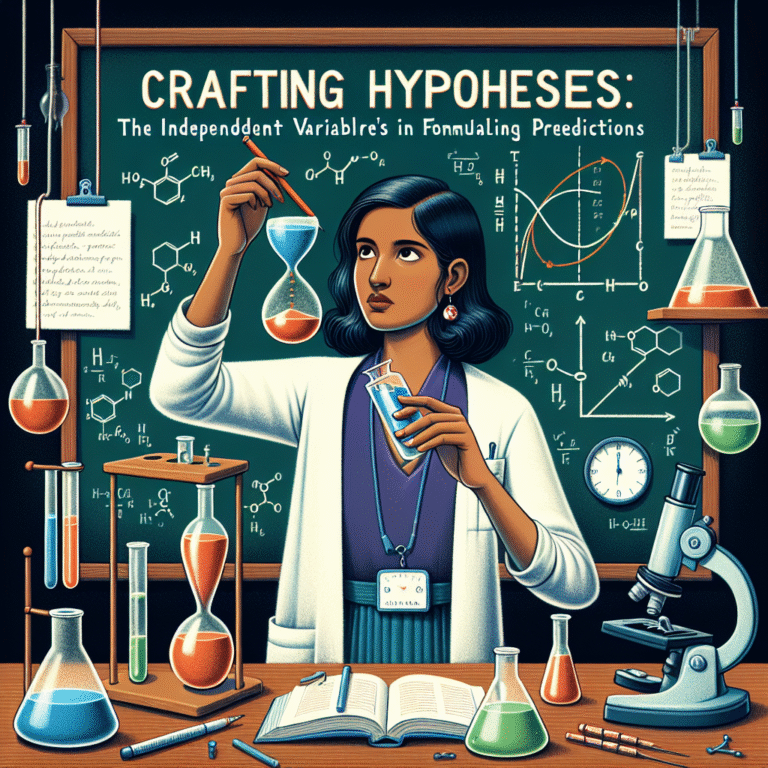
Introduction
In a world overwhelmed by information, decoding the data becomes not just essential, but crucial in harnessing insights that can drive innovation and understanding across various fields. From healthcare to economics and social sciences, correlational studies have emerged as a powerful methodology, allowing researchers to examine relationships between variables without necessarily proving causation. In this article, we will dive deep into decoding the data: the role of correlational studies in modern research, illuminating their significance, applications, and limitations, while highlighting real-world examples that demonstrate their impact.
Understanding Correlational Studies
What Are Correlational Studies?
Correlational studies investigate the relationship between two or more variables. By measuring the degree to which variables are associated, researchers can identify patterns and trends that might suggest a connection. However, it’s crucial to remember that correlation does not imply causation; this common misconception can lead to misinterpretations of data.
Types of Correlations
-
Positive Correlation: As one variable increases, the other variable also increases.
- Example: Higher levels of education correlate with higher income.
-
Negative Correlation: As one variable increases, the other variable decreases.
- Example: Increased smoking rates correlate with lower lung function.
- No Correlation: No discernible relationship between two variables.
- Example: Ice cream sales and the incidence of rain have no correlation.
The Importance of Correlational Studies in Modern Research
Identifying Trends in Big Data
With the rise of big data, correlational studies play a vital role in data analysis. By identifying trends and patterns in large datasets, researchers can draw conclusions without the need for controlled experiments. For instance, tech companies like Google and Facebook utilize correlational analysis to refine algorithms and enhance user engagement.
Cost-Effectiveness and Practicality
Conducting experimental studies can be expensive and time-consuming. Correlational studies offer a more cost-effective approach to exploring relationships between variables, particularly in fields where controlled experiments are impractical or unethical. For example, in healthcare, researchers may explore the relationship between lifestyle choices and health outcomes without manipulating participant behaviors.
Case Study: The Impact of Social Media on Mental Health
In recent years, the relationship between social media use and mental health has been a hot topic. Researchers conducted correlational studies that illustrated significant correlations between high social media usage and increased feelings of anxiety and depression among teenagers. These findings prompted discussions on responsible social media use and mental health awareness.
Analysis
This case study exemplifies how decoding the data can influence societal norms and policies, showcasing the powerful role of correlational studies in understanding complex social issues.
The Process of Conducting Correlational Studies
Step 1: Define Research Questions
Clearly define the relationship to be studied. For example, are you interested in how exercise relates to mental well-being?
Step 2: Collect Data
Gather data through surveys, observations, or existing databases. The data must be reliable and valid to ensure the correlation results are trustworthy.
Step 3: Analyze the Data
Use statistical methods to identify correlations. Techniques may include Pearson’s r, Spearman’s rank correlation, or regression analysis.
Step 4: Interpret Findings
Discuss the potential implications of the findings, remembering the caveat that correlation does not imply causation.
Limitations of Correlational Studies
While correlational studies are powerful, they come with limitations.
The Problem of Third Variables
There may be external factors influencing the relationship between the two variables being studied. For instance, the correlation between ice cream sales and drowning incidents might be impacted by the season, suggesting that summer heat drives both behaviors.
Not Indicating Causation
A major critique of correlational studies is their inability to establish cause-and-effect relationships. This can lead to oversimplified interpretations and potentially misguided conclusions.
Case Study: Alcohol Consumption and Academic Performance
A study may reveal a negative correlation between alcohol consumption and academic performance among college students. However, this does not prove that alcohol consumption causes poor academic performance; it may be that students with lower academic motivation are more likely to drink heavily.
Analysis
This case underlines the necessity of further research, perhaps through experimental designs, to investigate the causation behind observed correlations.
Enhancing the Reliability of Correlational Studies
To improve the reliability of findings, researchers can:
- Use Larger Sample Sizes: Larger samples provide a more representative view of the population, enhancing the generalizability of results.
- Employ Longitudinal Approaches: Tracking changes over time can offer insights into long-term relationships and trends.
Interpreting Correlational Study Results
Statistical Significance
Understanding p-values and confidence intervals is critical in interpreting results. A statistically significant correlation indicates a low probability that findings are due to chance.
Effect Size
Effect sizes help quantify the strength of the correlation, giving researchers a clearer perspective on the importance of the findings.
Actionable Insights for Researchers
As we navigate the complexities of data in modern research, consider these inspiring takeaways:
- Leverage Technology: Utilize advanced statistical software to enhance data analysis capabilities.
- Seek Collaborative Opportunities: Work with interdisciplinary teams to enrich perspectives and insights.
- Focus on Ethical Considerations: Obtain informed consent and ensure data privacy in studies that involve human subjects.
Conclusion
In the journey of decoding the data: the role of correlational studies in modern research, we’ve unraveled the significance and limitations of this invaluable research methodology. As technology evolves and our capacity to collect and analyze data improves, correlational studies will continue to play an essential role in informing practices and policies across various domains.
Inspiring curiosity and encouraging critical thinking, the application of correlational studies opens doors to new insights that can help reshape our understanding of the world. As researchers, practitioners, and consumers of data, let us embrace this critical tool responsibly and ethically.
FAQs
1. What is the main limitation of correlational studies?
Correlational studies cannot prove causation; they only identify relationships between variables.
2. How can I improve the validity of a correlational study?
Using larger sample sizes and ensuring data collection methods are reliable can enhance validity.
3. What are some common methods of analysis in correlational studies?
Common methods include Pearson’s r for linear correlations and Spearman’s rank correlation for non-parametric data.
4. How do I interpret a positive correlation coefficient?
A positive correlation coefficient indicates that as one variable increases, the other variable also tends to increase.
5. Can correlational studies inform policy decisions?
Yes, correlational studies can provide valuable insights that inform policy, especially when linked to real-world outcomes, but should be cautiously interpreted.
As we conclude this exploration of decoding the data: the role of correlational studies in modern research, remember that the quest for understanding continues. The landscape of research is ever-evolving, and your pursuit of knowledge can contribute to meaningful advancements in how we interpret and interact with data.


















